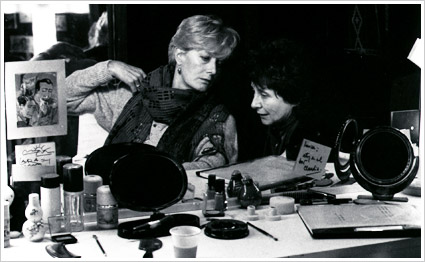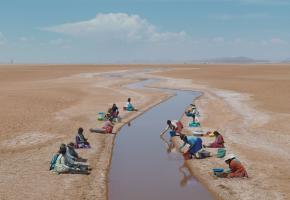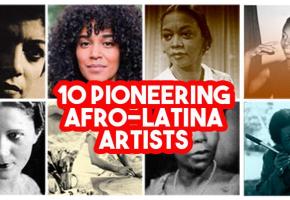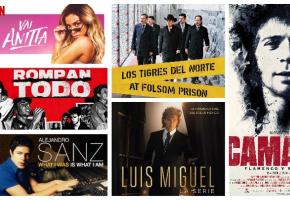Latinolife: Do you still believe in the transforming function of cinema?
Lita Stantic: Yes, I believe in it. The cinema that I like is the one that, when I leave the theatre, it has left something in me. I don’t believe any longer so much in cinema's ability to change the world. But I believe in it at a more individual level: cinema can change human beings, as it happens with art in general.
LL: As a producer, what is your contribution to a film?
L.S. Working as a producer is a bit like watching the film from the outside and being able to suggest things that the directors may accept or not. I think that a good producer can improve a film a little bit, though it is the director who creates the film. The director is the creative force. A producer is present in the pre-production and then in the post-production stages, during the cuts. He or she can be behind the casting, propose things, suggest re-takes, or say 'you’re making a mistake with this'. Sometimes you fight over, or discuss, things, and then the producer or the director may be right. There is always an exchange of opinions with directors during shooting or editing. Still, personally, I never take the final cut of a film.
LL: The field of Argentine cinema must have changed quite a lot since you started working?
L.S. Well, in my case, I joined the ACE (Experimental Cinema Association) in 1961-62. I studied there and also took a couple of courses with Simón Feldman on scriptwriting (one called something like 'from script to shooting'). In the 1960s, there were only four women of a total of almost 60 people, whereas nowadays in every film school half of the students are women. In the industry also, they were all men, except maybe for a dressmaker or a make-up artist in a crew, but it was very rare to have women. When I was 18 or 19 years old, I experienced the lack of confidence in women who wanted to be a part of a film crew. Then they allowed me to be part of a shooting, although I was warned I was wasting my time, that cinema (they didn’t even say production) was not for women. Even when we started to work with María Luisa Bemberg in the 1980s there was this mistrust about a woman being able to make films.
LL: Tell us about your encounter with Bemberg?
L.S. I was working with Alejandro Doria then — we made two films, La isla (The Island, 1979) and Los miedos (Fears, 1980) — when all of a sudden, María Luisa Bemberg called me. She said she had a project and she wanted our company to produce her. Doria didn't want to, but I felt I had to live that experience. I was not blown away by the first film, Momentos (1981), but eventually I worked with her for the following 10 years. These were very important and enriching years in my career, we worked very well together and it was really a challenge for two women to have their own company. I produced five of María Luisa’s films, and we took also other projects such as a documentary about football based on the book by Osvaldo Bayer. María Luisa was very active. She had the idea that she'd begun late and that she had to gain back some time. So, since then she spent her life either shooting a film or working on another one. And I am also very much like that too. So it was like we had hit something.
Nobody imagined that Gea Cinematografica (our company) was going to last for as long as it did, or that a film like Camila was going to reach to 2.5 million spectators and get an Oscar nomination. We lived some very powerful experiences. María Luisa was very much in tune with production: we would discuss the case, the book, and she would come with me to visit movie theatres in cities like Lanús, to make sure that everything went according to plans. Some say that people begin to loose their intellectual abilities when they age, however María Luisa went throw an immense growing process during those years, between 60 and 72 approximately, when she died. As time passed, you could see it in interviews, how she was more and more in charge.
LL: As a producer, is there a difference between working with someone like Bemberg or Lucrecia Martel and with Alejandro Doria or the younger male directors?
L.S. Evidently, for me, Bemberg and Martel are the two people, let’s say, are the oeuvres to which I feel more related. María Luisa meant my development as a producer. It was also like occupying a space that the context was denying to us, it was like beginning to have a very strong presence in a very hostile milieu. We were finally recognised, and people were telling us, ‘you defend your films so fiercely’. In the case of Lucrecia, she is a person with uncommon talent. I honestly consider her as one of the greatest directors of our time, in the world. I think her films have a particular stamp that at least in Argentina nobody else has; perhaps Carlos Reygadas does in Mexico. But yes, Bemberg and Martel are both, for different reasons, the two crucial moments in my career.
The cases of the other young filmmakers I supported were different. Pablo Trapero’s Mundo grúa (Crane World, 1999) and Diego Lerman’s Tan de repente (Suddenly, 2002) were filmed in similar conditions, both with very little money, a borrowed camera, expenses to be paid after the film’s release, etcetera. And I entered both projects at a later stage. I remember first watched Mundo grúa on my own and I said ‘what a nice film but how difficult, black and white, it needs a transfer’, it was shot on 16mm, not even Super 16mm, and the film had a lot of grain. Then I saw it again, with a friend and I said, ‘actually, I’d like this film to be released’ and then it worked great. I think it’s the film that was sold to more places in the world and in better conditions than any other. It was incredible but I didn’t see that coming. I only thought it was a film that was necessary. In the case of Adrián Caetano’s Bolivia (2001) I was involved during the shooting as an associate producer. It was quite complex, but I liked the film from the script.
LL: How did you and Martel got involved with Pedro Almodóvar?
L.S. Almodóvar and his company El Deseo were not involved in the production of Lucrecia’s first film La ciénaga (The Swamp). Then I read an interview where he said that the two films he had liked the most that year, 2001, were The Piano Teacher (Michael Haneke) and La ciénaga. So, that’s how we got in touch with him and they instantly wanted to work with us. Almodóvar has a brother, Agustín, he also works with Esther García. They are a whole team of producers. As a director, I like some of his films better than others but I think that he is one of the very few directors, nowadays, with a long career and quite a few hits. There are not many directors like that today, like there were before when every other year you would see a film by Visconti or Bergman. That’s uncommon today. Now it happens with Almodóvar and Woody Allen. You go to see a film by them and you enter a world that you more or less know. There’s continuity and some of his films are very good.
LL: In which projects are you involved at the moment?
L.S. Right now, I’m co-producing La Patota which is a remake of a film made in 1960 by the (Argentine) director Daniel Tinayre. The director is Santiago Mitre, and I became involved in the project because I think he is one of the young talents in Argentine cinema at the moment and someone we need to support. He directed El estudiante (The Student, 2011) which is a very good film. Here I’m co-producing with Agustina Llambí, a very young and resourceful producer. Llambí, Mitre and other two directors are the owners of the production company called La unión de los ríos.
LL: Recently, there has been a series of homages and tributes to your work and your career…
L.S. Yes, I have been involved in filmmaking during several moments of Argentine cinema. As the years have passed (more than 40 years now), and I have survived, some festivals and critics have felt the needed to do something. I was invited to Paraguay (by the International Film Festival of Asuncion) where I received a prize for my trajectory, and I also received acknowledgments from the DAC (Argentine Film Directors Association), the MALBA (Latin American Art Museum of Buenos Aires) and the Buenos Aires City Legislature. Some of these homages were related to my own film, Un muro de silencio (A Wall of Silence), which I re-mastered recently. The film is part of a book, a biography that Fernando Martín Peña and Máximo Eseverri wrote about me, which is called El cine es automóvil y poema (Cosmos, 2014).

















